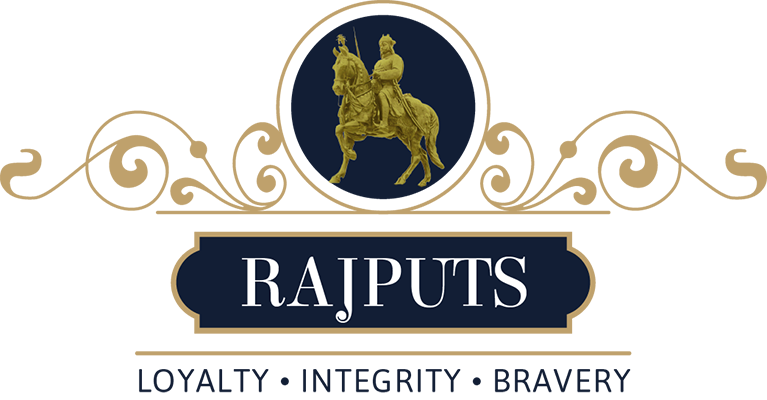Maharana Kumbha ("Hindu Surrtran" & "Abhinav Bharta Charya" or Kumbhakarna Singh, died 1468 AD) was the ruler of Mewar, a state in western India, between 1433 and 1468 AD, and belonging to the Sisodia clan of Rajputs. Kumbha was a son of Rana Mokal of Mewar by his wife Sobhagya Devi, a daughter of Jaitmal Sankhla, the Parmara fief-holder of Runkot in the state of Marwar.
Rana Kumbha was the vanguard of the fifteenth century Hindu resurgence in north-western India. A very tall and powerful man, he was about 8 feet tall; he held the Hindu flag flying high in an age when several Hindu kings like Kapilendradeva of east India, Deva Raya II of south India and Man Singh Tomar of central India defeated the Turkic invaders in different parts of India and expanded their kingdoms. Mewar was one of the major states ruled by a Hindu ruler and owing sovereignty to no one but the Lord Eklingaji (Siva).
History
After being overrun by the armies of Alauddin Khilji at the turn of the 13th century, Mewar had become relatively insignificant. Rana Hammira is credited with casting off the Muslim yoke and establishing the second Guhila dynasty of Chittor in 1335. The title Rana and later Maharana was used by rulers of this dynasty.
Rana Hammira's grandson, Maharana Mokal was assassinated by two brothers (Chacha and Mera) in 1433. Lack of support, however, caused Chacha and Mera to flee and Rana Kumbha ascended the throne of Mewar. Initially, Rana Kumbha was ably assisted by Ranmal (Ranamalla) Rathore of Mandore. In November 1442, Mahmud Khilji, Sultan of Malwa, commenced a series of attacks on Mewar. After capturing Machhindargarh, Pangarh and Chaumuha, the Sultan camped for the rainy season.
On April 26, 1443, Rana Kumbha attacked the Sultan's encampment, following an indecisive battle the Sultan returned to Mandu. The Sultan attacked again in November 1443, capturing Gagraun and adjoining forts but the capture of Chittor eluded him. The next attack was on Mandalgarh (in October 1446) and was also unsuccessful. Perhaps bloodied by these engagements, the Sultan did not attack Mewar for another ten years. In order to commemorate his resounding victory over the combined armies of Malwa and Gujarat in 1440 AD, Rana Kumbha got the famed 37 meter, 9 storey high 'Vijay Sthambha' erected at Chittorgarh which was completed in 1448 AD.
Ahmad Shah (ruler of Gujarat), and Muhammad Shah (ruler of Delhi) cooperated with Rana Kumbha to combat Mahmud Khalji. During this period, the rulers of Delhi and Gujarat conferred on Rana Kumbha the title of Hindu-suratrana ( Hindu Sultan ). Rana Kumbha was the first Hindu ruler to be given this accolade by the Muslim Sultans.
Capture of Nagaur and reaction of the sultans
The ruler of Nagaur, Firuz (Firoz) Khan died around 1453-1454. This set into motion a series of events which tested Kumbha's mettle as a warrior. Shams Khan (the son of Firuz Khan) initially sought the help of Rana Kumbha against his uncle Mujahid Khan, who had occupied the throne. After becoming the ruler, Shams Khan, refused to weaken his defenses, and sought the help of Qutbuddin, the Sultan of Gujarat (Ahmad Shah died in 1442). Angered by this, Kumbha captured Nagaur in 1456, and also Kasili, Khandela and Sakambhari.
In reaction to this, Qutbuddin captured Sirohi and attacked Kumbhalmer. Mahmud Khilji and Qutbuddin then reached an agreement (treaty of Champaner) to attack Mewar and divide the spoils. Qutbuddin captured Abu, was unable to capture Kumbhalmer, and his advance towards Chittor was also blocked.
Mahmud Khilji captured Ajmer and in December 1456, conquered Mandalgarh. Taking advantage of Kumbha's preoccupation, Rao Jodha (the son of Ranmal Rathore) captured Mandore. It is a tribute to Rana Kumbha's skills that he was able to defend his kingdom against this multi-directional attack. The death of Qutbuddin in 1458, and hostilities between Mahmud Begara (the new ruler of Gujarat) and Mahmud Khilji finally brought relief to Rana Kumbha.
Construction of forts
Kumbha is credited with having worked assiduously to build up the state again. Of 84 fortresses that form the defense of Mewar, 32 were erected by Kumbha. Inferior only to Chittor, the chief citadel of Mewar, is the fort of Kumbhalgarh, built by Kumbha. It is the highest fort in Rajasthan (MRL 1075m). The building of Kumbalgarh was a great change done in the ancient rules of Vastu Shashtra.
Death of Rana Kumbha and aftermath
In a patricide, Rana Kumbha was killed by his son Udaysimha (Udaysingh I). His achievements, however, continue to inspire successive generations of Indians.
Uday Singh did not live long and was killed by a lightning strike in Delhi after he went to offer a daughter in marriage to the Delhi Sultan. In five years of his reign, he lost much of Mewar territory and made Abu Deora Chief independent and gave Ajmer, Sakambhari to Marwar's Rathore king Jodha as a token of friendship(they were cousins). Udai Singh was succeeded not by his son but another brother, Raemal of Mewar. Raemal sought help of Sultan of Delhi and a battle ensued at Ghasa in which Sahasmall and Surajmall, the rebel brothers were defeated by Prithwiraja, second son of Raemal.
However, Prithwiraja could not ascend the throne immediately because Raemal was still alive. Nevertheless, he was chosen as the crown prince, as his younger brother Jaymal was killed earlier, and his elder brother Sangram Singh was absconding since the fight between the three brothers.
Prithwiraja was ultimately poisoned and killed by his brother-in-law, whom Prithwiraja had beaten up for maltreating his sister. Raemal died of grief a few days later, thus paving way for Sangram Singh to occupy the throne. Sangram Singh, who had, meanwhile, returned from self-exile, ascended the throne of Mewar and became famous as Rana Sanga.
Back to list of Famous Rajput Personalities
Most of the information above is courtesy of Wikipedia.
For corrections, additions or comments, please submit a request through contact page.
